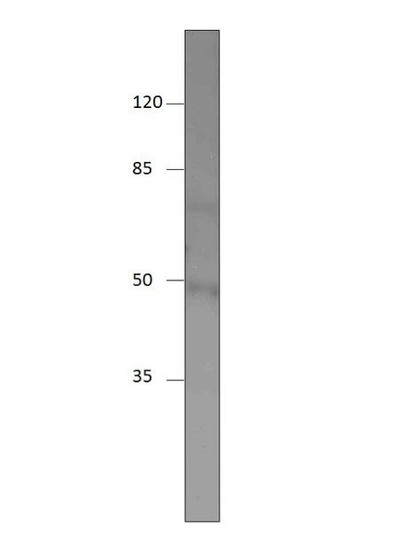| Host: | Rabbit |
| Applications: | ELISA/WB |
| Reactivity: | Human/Monkey/Mouse |
| Note: | STRICTLY FOR FURTHER SCIENTIFIC RESEARCH USE ONLY (RUO). MUST NOT TO BE USED IN DIAGNOSTIC OR THERAPEUTIC APPLICATIONS. |
| Short Description : | Rabbit polyclonal antibody anti-SHISA9 (250-300) is suitable for use in ELISA and Western Blot research applications. |
| Clonality : | Polyclonal |
| Conjugation: | Unconjugated |
| Isotype: | IgG |
| Formulation: | Contains Tris, HCl/Glycine buffer pH 7.4-7.8, 30% Glycerol and 0.5% BSA, along with cryo-protective agents, Hepes, and long-term preservatives (0.02% Sodium Azide). |
| Purification: | Affinity Purified |
| Concentration: | 0.64-0.72 µg/µl |
| Dilution Range: | WB: 1:500DB: 1:10, 000ELISA: 1:10, 000IP: 1:200 |
| Storage Instruction: | Store at-20°C for long term storage. Avoid freeze-thaw cycles. |
| Gene Symbol: | Shisa9 |
| Gene ID: | 72555 |
| Uniprot ID: | SHSA9_MOUSE |
| Immunogen Region: | 250-300 |
| Immunogen: | Synthetic peptide taken within amino acid region 250-300 on CKAMP44a protein. |
| Tissue Specificity | Brain-specific. Mainly expressed in neurons, including in hippocampus, cerebral cortex, striatum, thalamus, olfactory bulb and cerebellum. Expressed in most brain structures during embryonic and postnatal development. |
| Function | Regulator of short-term neuronal synaptic plasticity in the dentate gyrus. Associates with AMPA receptors (ionotropic glutamate receptors) in synaptic spines and promotes AMPA receptor desensitization at excitatory synapses. |
| Protein Name | Protein Shisa-9Cystine-Knot Ampar Modulating Protein Of 44 KdaCkamp44 |
| Cellular Localisation | Cell ProjectionDendritic Spine MembraneSingle-Pass Type I Membrane ProteinSynapse |
| Alternative Antibody Names | Anti-Protein Shisa-9 antibodyAnti-Cystine-Knot Ampar Modulating Protein Of 44 Kda antibodyAnti-Ckamp44 antibodyAnti-Shisa9 antibody |
Information sourced from Uniprot.org






